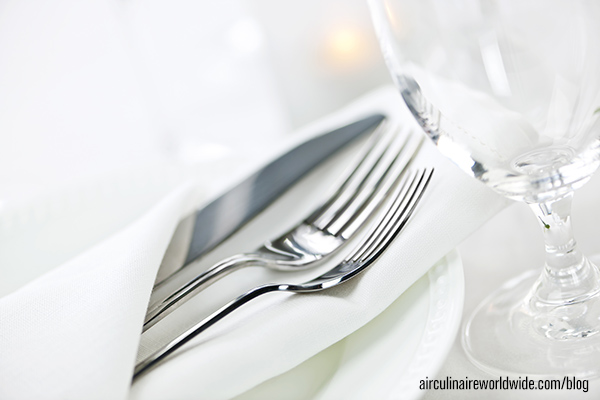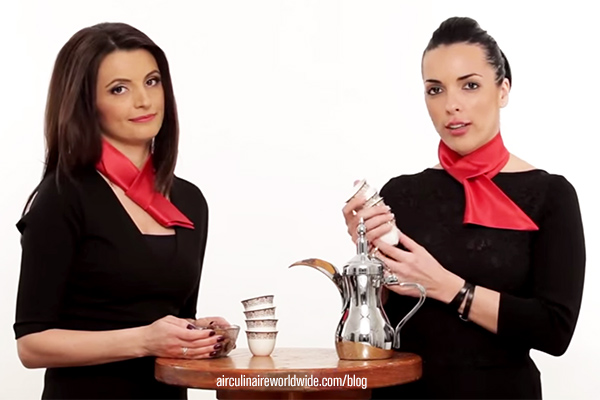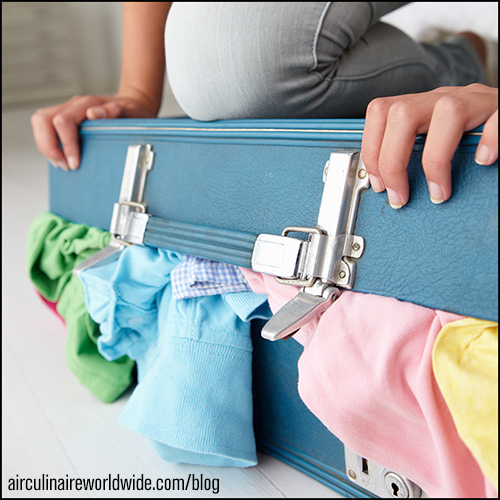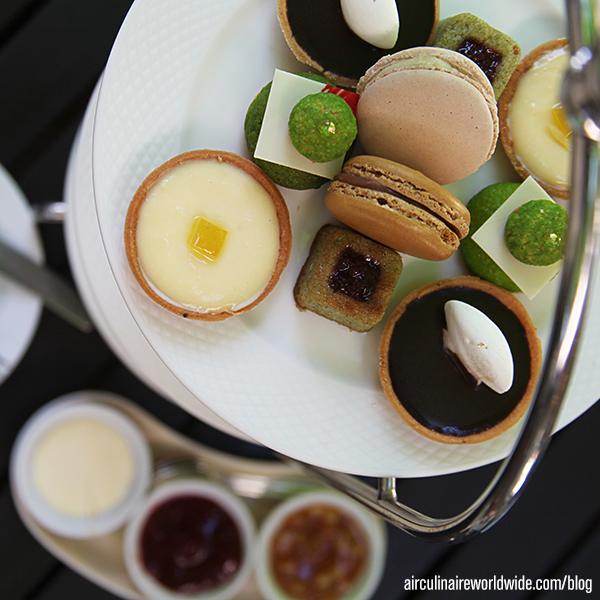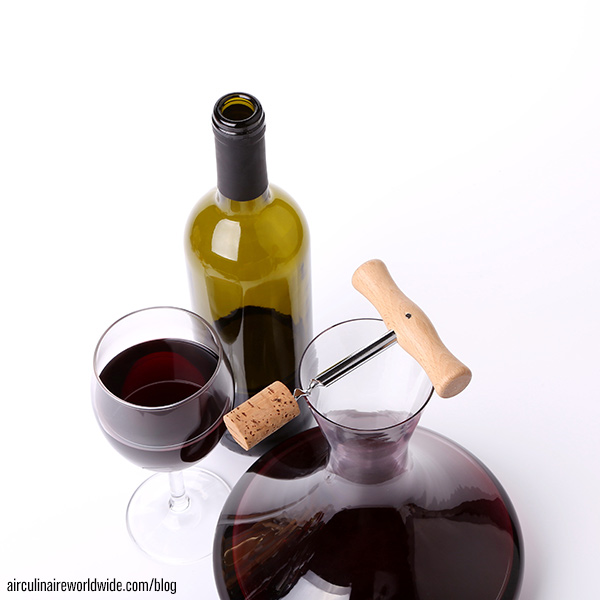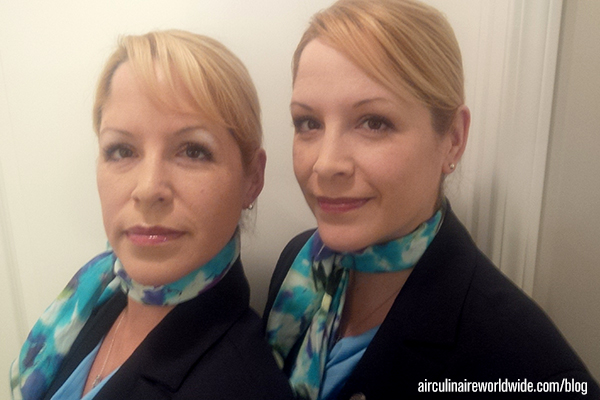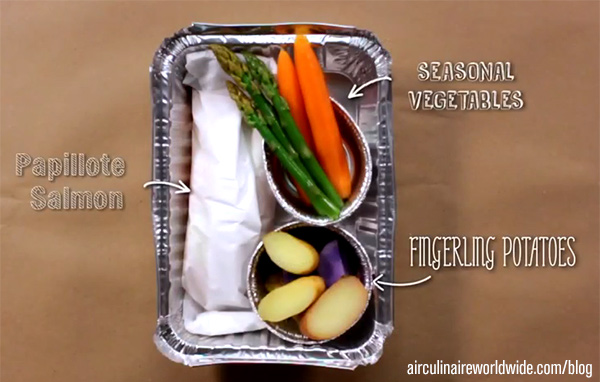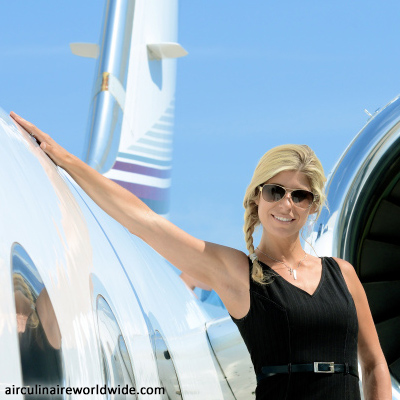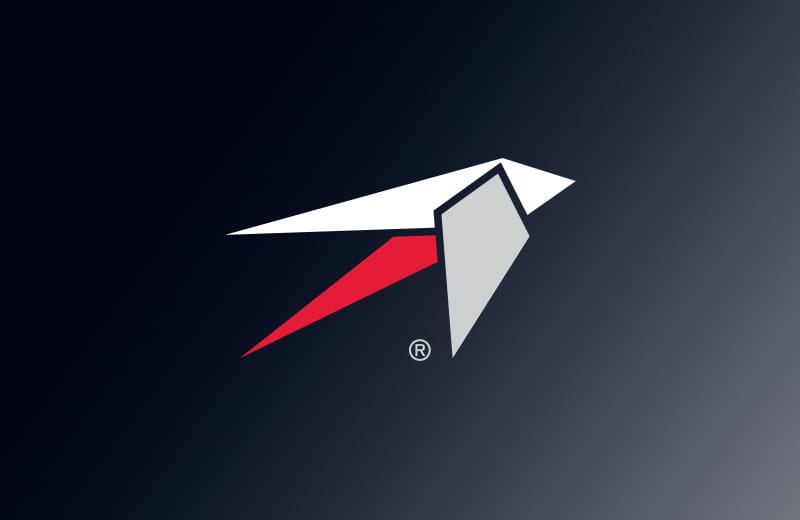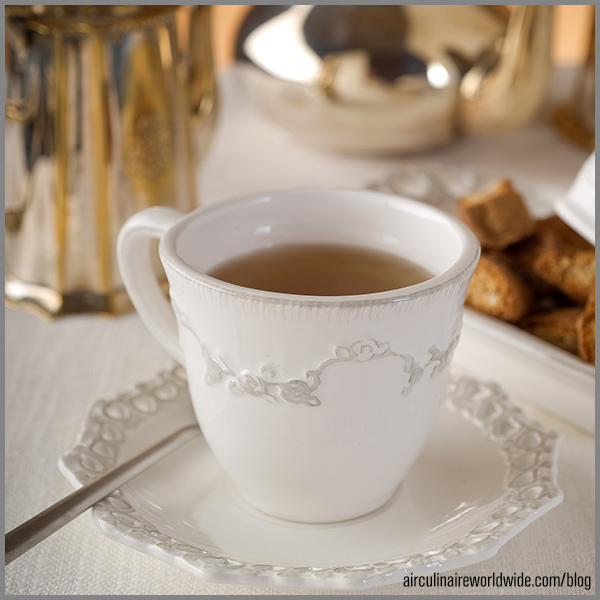Below you will find eight service tips for serving your passengers (or as we call them in the industry, “pax”) on a private jet. Along with these tips, you will find questions to help you work through various scenarios. As always, if you have additional tips or questions, be sure to leave a comment below.
1. Arranging catering from a client profile
When given a profile for clients, but no explicit catering order for the trip, how many items do you have onboard to cover all bases of the profile? Do you get everything listed? What is your catering plan when you have no idea what they will specifically want? The way I handle this is by fact-finding:
- I look at the time of day and match the profile up.
- I speak to the last FA that flew them.
- I look at the duration of the flight, and the destination.
Process of elimination always helps me dwindle down an enormous profile to my top good guesses of what would be appropriate and make them happy!
2. Servicing a quick flight
As we all know, many pax want a meal or at least apps on a very short flight. I have even done a full breakfast on a 26-minute flight! How do we make that happen? First, we all probably know it is best to pre-plate everything. If you are ordering from a caterer, ask for individually plated items you plan on serving. Have them labeled with names if you planned specific food for each person. If you are serving platters (cheese trays, veggie crudites, etc.), you can ask the caterer (or do it yourself) to make individual sampler plates. It is easier for storage, too. Have utensils, napkins and placements ready to go. It also helps to serve drinks pre-departure so, once in the air, you can concentrate on food service, then serve seconds on beverages if time allows.
3. Planning inflight catering after a preflight meal
If your passengers say they do not need food for the next leg because they will be coming from dinner, what do you do?
A) Do not arrange any catering.
B) Go by their profile and pick up dinner anyway.
C) Get something light, like appetizers.
Personally, I tend to go by their profile and order dinner for them. In my experiences, it is Murphy’s law that pax will be hungry, and it is better to be prepared.
4. Greeting passengers
When greeting pax (especially for the first time), always use the formal salutation for them. Never use a first name unless told otherwise, and always let them reach out first to shake your hand first. They may or may not want to shake hands, so it is not appropriate for you to reach out to them. If they are royalty or a top political figure, use their title as well. All of this may seem elementary, but I have heard of people making these mistakes. Also, take the time to learn the proper pronunciation of their name – don’t wing it! Even take the time to practice saying it if it is a difficult name. As the saying goes: “You never get a second chance to make a first impression!”
5. Galley storage
When we run out of room or have small galleys to begin with, what is the best plan for safe storage? On a recent trip, I had a chiller that didn’t work, so I had to use dry ice on the top rack to cool the food below. Of course, this took up a lot of room I needed for storage. I use small coolers, the baggage compartment and try to have food packaged in the best possible way to save space.
6. Serving our pilots
Our pilots are truly “stuck in a box” for several hours at a time. Yes, they can get up, but for a limited time. It is essential to their health (and everyone’s safety) that they eat and stay hydrated. So, how often do you check on your pilots? What is your service ritual with them during short flights and long flights?
Personally, I do not let more than 30 minutes go by without checking in. Half of the time, it is so discrete that they might not even know I am doing it. Sometimes between “real check-ins,” I just may look over their shoulder to make sure they have water and snacks. I try to encourage my pilots to drink less coffee (dehydrating) and more water or coconut water (hydrating)! Even before a flight gets underway, I usually stock their area with water and a healthy snack so in case I get busy for a while, they are still taken care of.
7. Beverage service
First, take into account what the pax are drinking. For instance, if they are drinking wine at dinner, I automatically refill the glass half way the first time I see it almost empty. After that refill, I ask before refilling again. Typically, people do not drink more than two glasses at one meal. If the drink is soda, I perform the first refill without asking, as well. If all ice is melted, I simply say, “Let me freshen up your beverage,” and then I take it to add ice. After the second glass, then I ask, but I wait a bit unless it looks like they are guzzling it down! With water, I always refill without asking. I make sure they always have either a bottle or glass of water with them. If someone is sipping on a glass of whiskey on the rocks, I keep an eye on the ice to make sure the drink does not get watered down. This beverage service plan keeps them feeling taken care of, but not bothered.
8. Clearing a meal
As corporate flight attendants, how do we know when to remove plates? Do we look for visual cues, like utensils laid across the plate at a diagonal or straight vertical? What about looking for napkins on plates? Do we watch from afar until we no longer see a desire to eat? Do we wait until the principle pax has finished before clearing all plates? This is critical because the last thing we want to do is interrupt a meal or take a plate from someone who is just a slow eater or wants to graze.
First, have you ever noticed that when someone is done eating, he or she will sit back or slide back in his or her chair a little? Everyone does it! Children just get up from a table and walk away; as adults, we still have the same reflex (to move away from our plate, only we are more civilized about it. I watch my pax from afar, for that huge sign. I also watch for the combination of utensils aligned over the dish, or the napkin placed on the plate. I try to wait until my lead pax is done, especially when moving from one course to the next. They also “look” for you; they subconsciously and consciously want you to notice and take the plate away. Although humans use verbal communication a lot, they use nonverbal more!
As you get to know your pax, you will likely use a mix of these methods to develop your own style of working with them based on their common cues.
Questions?
If you have any questions about this article, contact Kathryn Martone at kathryn.martone20@gmail.com.
| This is an article by guest author Kathryn Martone, a corporate flight attendant and industry expert based in Los Angeles, California. Kathryn is the author of a novel and a popular industry blog, both of which are titled “Cobblestones and Heels.” Any thoughts expressed in this article are entirely Kathryn’s and do not necessarily reflect the views of Air Culinaire Worldwide. |
If you would like to be considered for becoming a guest author, please contact socialmedia@airculinaire.com.
